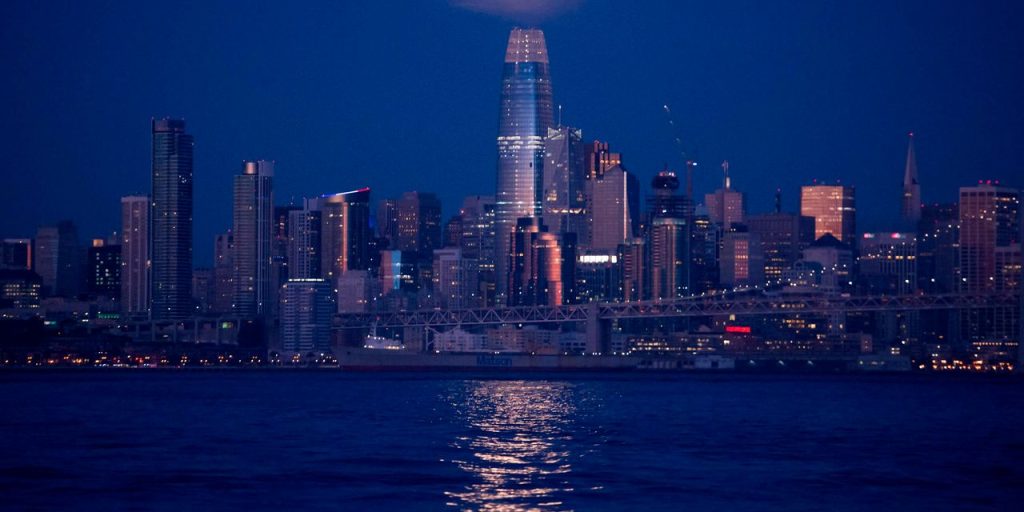Corrects title of Lincoln Property Company executive
San Francisco and many other West Coast cities have a visibility problem.
Demand for top office space with skyline views has held up well in the wake of the pandemic, a rare bright spot in an otherwise glum backdrop for landlords.
The rest of the floors? Not so much, leaving a cloud over even prized office buildings nearly four years since COVID sparked an exodus from downtowns.
“You’ve got the winners and you’ve got the losers right now,” said Barry DiRaimondo, co-founder and chief executive of real-estate developer Steelwave. “And the winners happen to be 10% of the supply and the losers happen to be 90% at the moment.”
Steelwave has been closely tracking office-leasing activity in markets where it operates as an owner, but also in San Francisco, where it is a tenant at 101 California, a newly renovated 48-story office tower in the heart of the financial district.
George Clever, the city head of San Francisco for Hines, a global real-estate investment firm that owns 101 California, said demand from tenants for upper floors has remained robust, which has helped keep the property roughly 80% occupied.
Yet with leasing activity still largely frozen for middle and lower floors, Clever said it remains hard to gauge where overall rents for San Francisco office properties might settle, despite this year’s string of high-profile distressed sales.
Data from VTS, which tracks office-leasing activity globally, speaks to the growing demand for rarified air in San Francisco.
In New York City, tenants have been flocking to all floors of trophy buildings, but in San Francisco it has been all about the views, especially the top 10 floors, said Nick Romito, VTS co-founder and chief executive.
“Trophy, non-trophy, with great views you are getting activity,” Romito said, making San Francisco unique.
Nationally, landlords still face a flood of vacancies, with San Francisco’s overall rate pegged at a historically high 34% in the third quarter by CBRE, and a crippling 47% for lower-quality, Class B office space in the financial district.
“The best-quality space with views probably has about a 10% vacancy,” said Colin Yasukochi, a tech-focused researcher at CBRE. “That’s why they are able to keep rents high.”
Yasukochi said rents can reach as high as $200 a square foot for the highest-end space. But CBRE Research also found the flight-to-quality has left a roughly 52.4% gulf (see chart) between rents at buildings with prime views and those without, up from 15.2% in 2019.
Tenants paying top dollar, however, also tend to be opting for smaller footprints to keep their office costs steady, effectively getting better views for the same price. “Hybrid work also plays into this,” Yasukochi said.
“That’s consistent with what we are seeing up and down the West Coast,” said Rob Kane, said Rob Kane, executive vice president at Lincoln Property Company, a global commercial real-estate firm, of companies often still downsizing but looking for space in better buildings. “We are seeing that play out as we speak.”
Read the full article here
